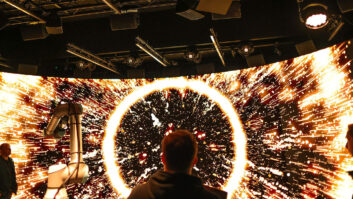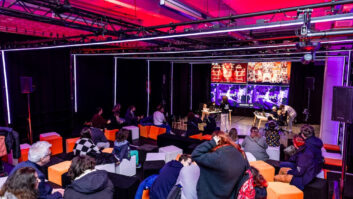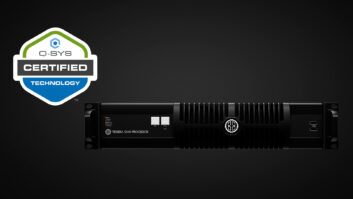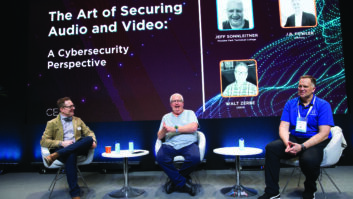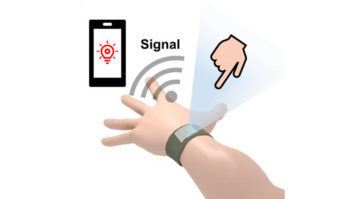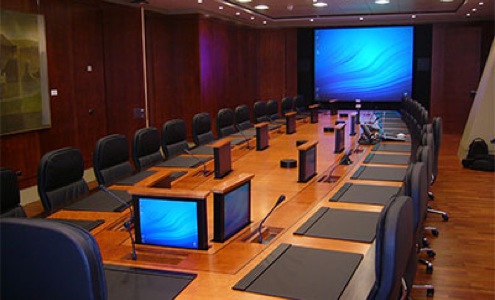
There is no reason for the use of technology to break the aesthetic and architectural design of meeting and conference rooms. To the contrary, the use of screens that are raised and lowered at the push of a button, staying completely out of sight inside the work table when not in use, produces a pleasing effect.
The meeting room table
The meeting room table plays an essential role in the communications arena. Its shape and finish are basic aspects of the equipment, defining the level of interaction of the participants.
Thus, the long tables have a hierarchial element, while the round tables have no prominent seats, facilitating changes in position. Then there are oval tables, square tables, and other shapes.
These rooms seek to reflect the personality of the company, so the table design should adjust to its philosophy, identity and culture.
In general, a rectangular table defines the position of highest rank at one of its two ends. With slightly rounded corners this effect is diminished – and if necessary allows space for additional participants.
The round table is a metaphor for equal communication pursuing consensus of interest. Both the level of interaction and the variability of the number of participants are the most important aspects in this case.
From here, many different combinations can be made: oval tables, open ends, horseshoes, irregular shapes, etc.
If there is much variation in the number of participants, instead of having a fixed facility, the meeting rooms can be equipped with individual units.
Sufficient daylight without any glare, a room with an appropriately sized table according to the number of participants, and ergonomically designed chairs make up the basic meeting room.
There would be a box on the floor under the table that allows electricity to be supplied, internet access and the integration of automatically-appearing screens that are stored out of sight inside the table when not in use.
It is important for the table to have a cable guide for easy access to the connections. It is possible to include removable covers that allow access to connections on the trays or cable grooves located under the table.
Audio conference systems are often used with microphones and speaking request buttons, allow for simultaneous interpreting when the meeting is multicultural, and voting systems for public bodies.
Each mobile screen can also be equipped with a camera for video conferences. There is often a centrally located large screen or projector.
With thanks to Arthur Holm and Albiral
